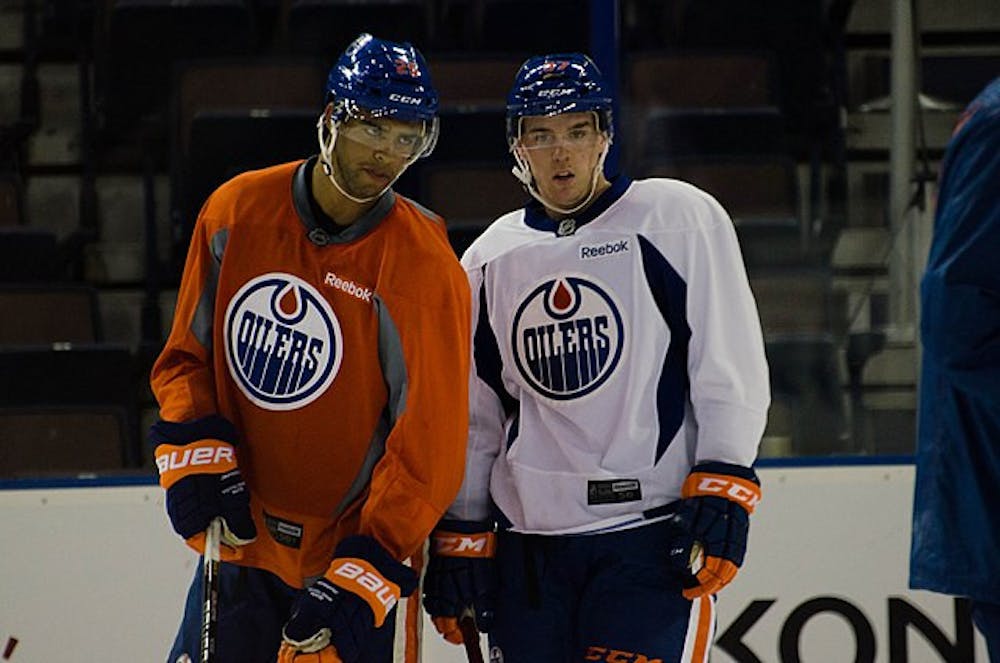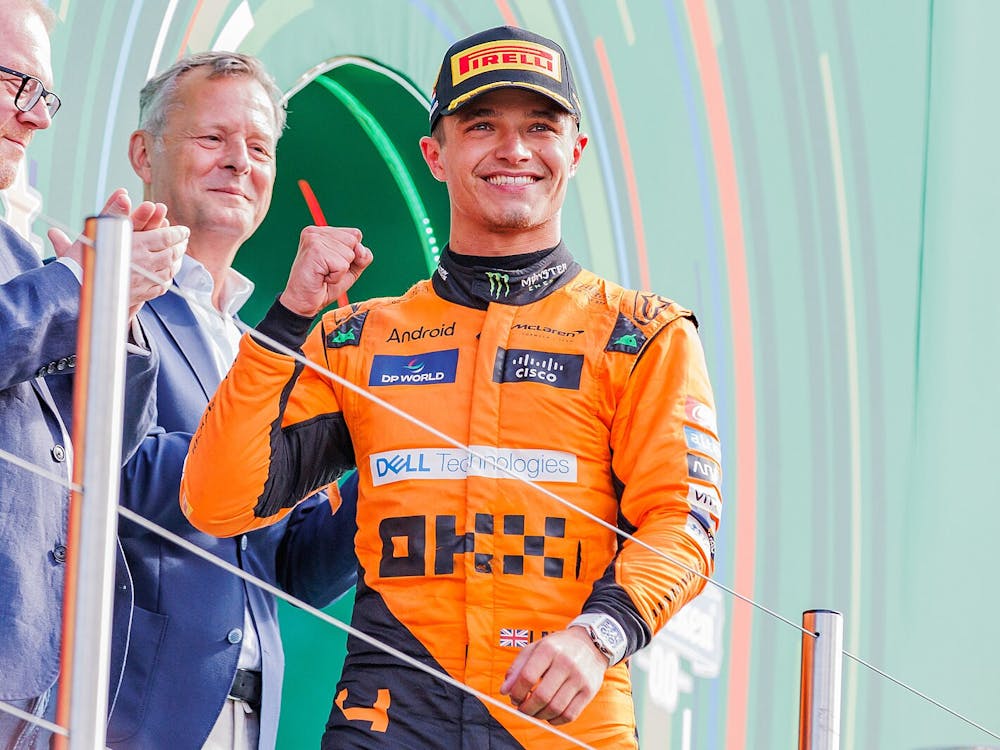
Sixteen wins and just five losses. That’s where the Edmonton Oilers were 21 games into this season. They were looking like a team poised for a deep postseason run. Little did anyone know, the Oilers would win just two out of their next 15 games. With the Oilers head coach throwing the goalie under the bus, everything that could go wrong felt like it was going wrong for their season.
Let’s be clear: The Oilers aren’t a 16-5 team, but they also aren’t a 2-13 team either. They profile as a team that ranges somewhere between decent and good and that more likely than not makes the playoffs.
However, add in the detail that the Oilers have not one but two Most Valuable Player candidates in Connor McDavid and Leon Draisaitl and are somewhere in the range of decent to very good, and this becomes quite disappointing. Given their elite, top-level talent, how are the Oilers not a serious Cup contender?
The Oilers are good, but they should be so much better. They are like a car dealership that was awarded two Ferraris at a deep discount but is still struggling to make a profit. General Manager Ken Holland architected several Cup-winning teams in Detroit, but he did so with largely a blank check and no salary cap. It’s fair to ask if he is capable of designing a championship-caliber team in the salary cap era.
To better understand why the Oilers could be so much better, let’s first explore how elite McDavid and Draisaitl are as players. Last year, McDavid and Draisaitl combined to score 64 goals and tally 125 assists for a total of 189 points across just 56 games apiece. That’s good for outlandish averages of 1.14 goals, 2.23 assists and 3.37 points per game for the duo. When McDavid is on the ice, the Oilers have a 68% expected goals percentage, meaning we could anticipate that 68% of the goals scored when McDavid is on the ice would belong to the Oilers. Draisaitl is not far behind, slotting in at a similarly impressive 64% expected goals percentage.
These are staggeringly elite numbers. Whether by analytics or the eye test, McDavid is widely considered to be the best player in hockey, and Draisaitl isn’t far behind, easily slotting in as one of the five-to-10 best players in the game.
It's when McDavid and Draisaitl aren’t on the ice that the Oilers have major problems. When McDavid is off the ice, the Oilers expected goals percentage drops an astounding 27 percentage points to a putrid 41%. This demonstrates just how badly the Oilers get out-chanced when he isn’t one of their five skaters. We see similar effects when it comes to the Oilers without Draisaitl, with the expected goals percentage dropping 19 percentage points to 45%. Sure, practically every team sees its expected goals percentage drop significantly when its two best forwards aren’t on the ice, but Edmonton’s drop is monumentally colossal.
Put bluntly, Edmonton has no forward depth. Looking at the top two forwards by points for each of the NHL’s 32 teams, the Oilers see an outsized drop when their top two forwards aren’t on the ice: The 27 and 19 percentage-point decreases associated with McDavid and Draisaitl being off the ice rank first and sixth, respectively. For context, the league average drop is just 15%. Add in the fact that Draisaitl is on the ice for much of the time McDavid is off it and McDavid is on the ice for much of the time Draisaitl is on the bench, and this differential is alarming.
The Oilers are a classic example of a team with championship-caliber star power but playoff-losing depth. This reflects badly on Holland, who was given the hardest ingredients to find when designing a championship-caliber team yet still managed to take away from the dish by over-seasoning it with bad contract management. The Oilers are paying McDavid and Draisaitl $12.5 million and $8.5 million respectively, and estimates vary, but it’s likely the two are delivering about $35 million in value to the team. This massive surplus value associated with two of the game’s best players makes the Oilers’ troubling asset management and struggles to complement their stars with appropriate depth that much more frustrating.
This past summer, the Oilers appeared to have caught exactly the kind of break they needed when they entered the offseason with approximately $23 million in cap space. They made two interesting bets that were fairly savvy when considered on their own in signing Zach Hyman to a seven-year contract worth $5.5 million per season and Ryan Nugent-Hopkins to an eight-year deal worth $5.125 million per season. In a win-now move, the Oilers gave both of these players more years than either is likely to remain this good for in exchange for paying them less money per season in an effort to save a little cap space to pursue more players during McDavid and Draisaitl’s primes.
It was a methodical and smart gamble that would have been great had the Oilers not floundered away their remaining cap space and savings from giving Hyman and Nugent-Hopkins additional terms on likely overpaying other players.
With nearly $12 million in remaining cap space, the Oilers traded assets to the Chicago Blackhawks for a pricey and old player in Duncan Keith when some thought Chicago would have to give up assets to shed his contract. Holland then traded a defensively solid and still up-and-coming young right-shot defenseman to the Carolina Hurricanes in Ethan Bear for a forechecking depth forward in Warren Foegele — a fine enough player in his own right but one who unfortunately hasn’t been able to single-handedly solve Edmonton’s forward depth problem.
Furthermore, instead of finding a defense-first, right-shot defenseman to balance out the team’s wealth of offensive defenseman on the right side, Holland rounded out the offseason by overpaying defenseman Cody Ceci and falling in love with the sexy offensive prowess of defenseman Tyson Barrie so much that he overlooked the substantiveness of Barrie’s significant defensive ineptitudes. Finally, while understandable based on a strong prior season, entrusting the goaltending to the recently good yet oft-injured Mike Smith was the icing on the cake for the tumultuous season that has followed.
The Oilers doubly shot themselves in the foot with some of these questionable signings because they not only failed to fix their massive need for depth but are also prohibiting themselves from winning during the win-now, high-value years of Hyman and Nugent-Hopkins’ contracts. They failed to fix their current issues while also setting themselves up for a painful cap crunch in the form of expensive, aging veterans down the road.
Teams with two elite forwards in their prime at the top of their lineup like Edmonton don’t miss the playoffs and typically can lay claim to legitimate Stanley Cup aspirations. In the Sidney Crosby-Evgeni Malkin era, the Pittsburgh Penguins made the playoffs 14 times, won 20 playoff rounds and took home three Stanley Cup championships. In the Jonathan Toews-Patrick Kane era, Chicago has made the playoffs nine times, won 16 playoff rounds and taken home three Stanley Cup championships. And in the Alex Ovechkin-Nicklas Bäckström era, the Washington Capitals have made the playoffs 13 times, won 10 playoff rounds and taken home a Stanley Cup championship.
Edmonton has its two stars but has failed to make any similar mark in the McDavid-Draisaitl era so far. Washington has only missed the playoffs once in the Ovechkin-Backstrom era, and Pittsburgh just twice in the Crosby-Malkin era. The Oilers have already missed the playoffs more times in the McDavid-Draisaitl era than Pittsburgh and Washington ever have with their star duos combined.
How does Edmonton right the ship? The good news is that despite some underwhelming decisions, they still have time: McDavid and Draisaitl are 25 and 26 years old, meaning they are in their prime and likely playing the best hockey they ever will but are still on pace for playing elite hockey for several years. Despite their inability so far to find appropriate depth players to complement the stars, the Oilers still do have the hardest pieces of the puzzle to acquire in McDavid and Draisaitl. After all, it is much easier to turn a cap-crunched team with star power into a legitimate contender than it is to turn a team with elite depth but lacking stars into a playoff powerhouse.
Edmonton owes it to McDavid, Draisaitl and the fans to put a legit Stanley Cup contender on the ice. They have two elite stars playing radiant hockey, and it’s time for this team to be built for a deep playoff run.





